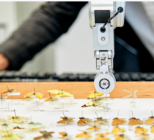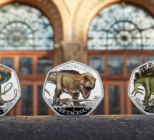The Museum has joined forces with data visualisation specialist Beyond Words to deliver a public engagement initiative capable of intuitively illustrating how the movement of people has altered during lockdown – and the subsequent changes this has had on the environment.
Using a variety of open source data, the Museum will aim to engage people with the “dramatic societal changes that have taken place since lockdown measures were announced on 23 March” through infographics, articles, videos and social media.
The project, which has received funding from the Natural Environment Research Council, will result in a ‘live interactive online event’ in which audiences can interact with emerging environmental researchers.
“From goats colonising deserted streets in Wales to cleaner air and clear skies in London, the Covid-19 pandemic has presented an unprecedented view of our world with minimal human presence,” says Clare Matterson, executive director of public engagement at the Natural History Museum.
Matterson continues that the Museum is seeking to “use this new appreciation of the human impact on the natural world to enhance understanding of our role in the interconnectedness of nature and excite people about the possibilities of environmental science”.
The new interdepartmental project, she adds, is also an “incredibly valuable listening exercise – an exciting opportunity to find out which environmental impacts the public care most about to help shape not only future exhibitions, and events but also scientific research projects”.
Duncan Swain, creative director at Beyond Words, labels the initiative “an amazing opportunity to be able to explore datasets with the Natural History Museum’s scientists” and to produce engaging content concerning the “changing impacts we’re all having on the environment around us”.










